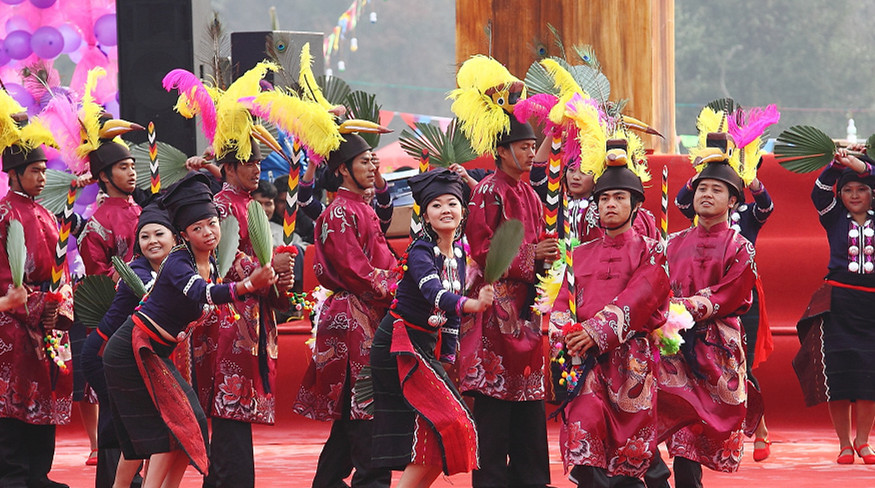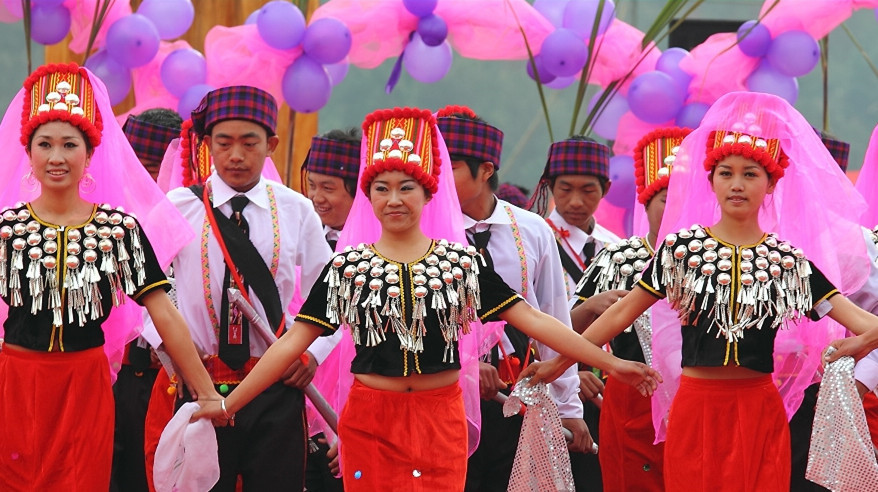
Munao Zongge Festival of Jingpo Ethnic Group
“Munao Zongge” is a grand festival ceremony among the Jingpo people, derived from the Jingpo and Zaiwa languages, meaning “dancing in mass.” It holds significant cultural and historical importance, often celebrated during events such as battles, victorious returns, good harvests, weddings, funerals, and welcoming esteemed guests.
According to legend, “Munao Zongge” originated from a time when a devil terrorized the Jingpo people, feeding on children and causing destruction. A courageous man named Leipan led his people to safety, and with the help of the sun god, defeated the devil. In celebration of this victory, the Jingpo people hold singing and dancing gatherings known as “Munao” to commemorate their ancestor’s heroic deed.

During the festival, which typically lasts for three days, the entire Jingpo community gathers in the Munao square to dance joyously day and night. Central to the square are four Munao pillars adorned with various symbolic patterns representing luck, happiness, unity, and bravery. Music players perform on a stage nearby, accompanied by large drums and gongs hung from the pillars. Bamboo fences with two doors surround the square to ward off unwanted spirits and animals.
The festival begins with cannon salutes and offerings of wine and gifts exchanged among the participants. Elderly leaders don traditional Munao hats and dragon robes, wielding broad swords as they lead the dances according to the patterns on the pillars. As the festivities progress, dancers split into groups, some following structured routines while others dance freely under skilled guidance.

Over time, “Munao Zongge” has evolved from a government-sponsored event with religious undertones to a festival embraced by all Jingpo people. While traditional singing and dancing remain central, modern celebrations include a variety of entertainment, local products, and cultural performances, reflecting the evolving nature of the festival in contemporary times.















